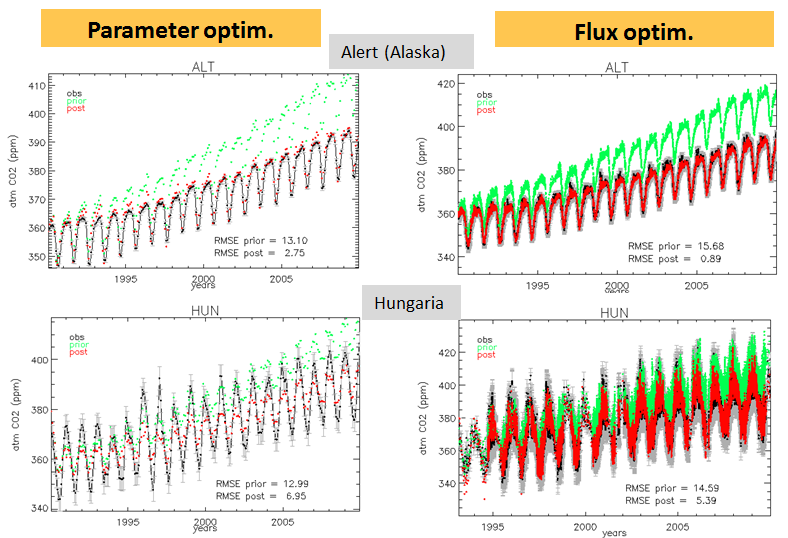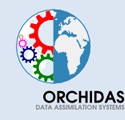Part 8. Flux versus Parameter optimisation using atmospheric CO2
Whether we should optimize surface fluxes with atmospheric CO2 data (classical atmospheric inversion) or we should directly optimize the underlying ecosystem model parameters used to estimate the natural surface fluxes, is a current research question. Both approaches have different strength and weaknesses.
To investigate that question, we present below an example of the two appraoches:
- Parameter optimization: The example follows from Part-6 where the parameters of the ORCHIDEE model have been sequentially optimized with first MODIS-NDVI data, then FluxNet data, and finally atmospheric CO2 data (step wise approach, explain in the main presentation).
- Flux optimization: Same as with the parameter optimization, except that the last step with the atmospheric data corresponds to a classical atmospheric inversion (see main presentation).
Note that the atmospheric network used correspond to that of Part 5. MODIS-NDVI data were taken at around 100 sites across the globe and 77 FluxNet site were used with observation of NEE and LE.

Fit to the data (prior and posterior) for the flux inversion and the parameter inversion, for 3 stations. The temporal resolution is monthly for the parameter optimization while it is based on raw atmospheric data for the flux optimization (each day for these stations). RMSE are shown for prior and posterior.
Questions:
- What are the main differences between the two methods that explain differences obtained in the model data fit (appart from the use of monthly aggregated data for the parameter optimization)?
- From these differences, what do you expect in terms of impact on the surface fluxes?







